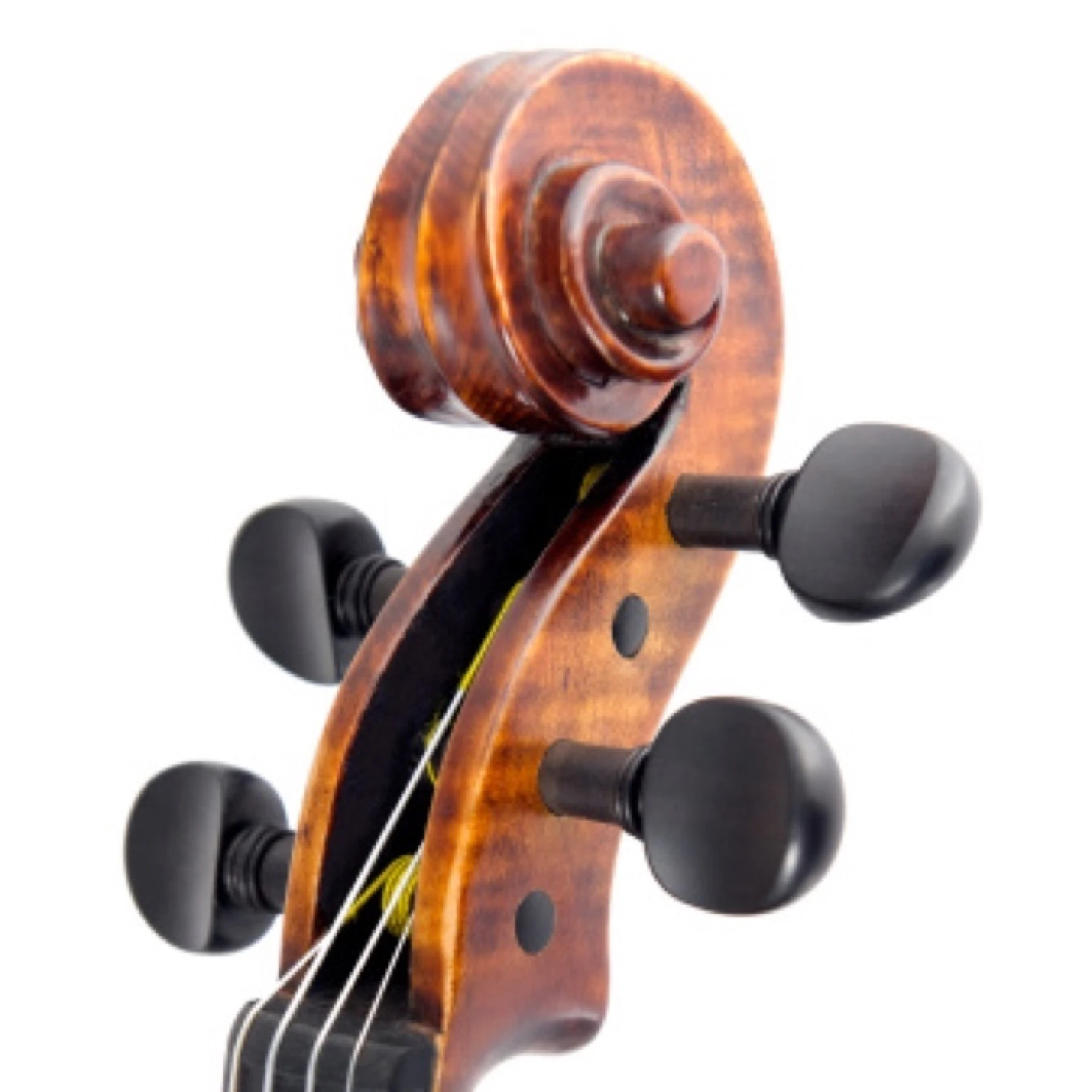
Two thousand years ago, stringed instruments such as the lute, barbat, pandore, oud, zither, cittern, etc. all relied on tuning pins or pegs to hold strings under tension by friction. Tuning pins, such as are still found on harps and pianos, utilize a removable key or wrench to adjust. Tuning pegs (friction pegs, pegs) are essentially conical dowels that wedge into tapered holes. Though typically turned from wood, these pegs may also be made of other materials including bone, brass, etc. A thumb knob is integral to the design, qualifying each peg as an independent string tuner. Such tuning pegs made their way onto ukuleles and early guitars and remain a preferred component of orchestral stringed, bowed instruments such as violins, violas, cellos... even upright bass.

Martin Tuning Pegs
The invention of the modern tuning machine head (aka machine head, tuning machine, tuning head, tuner, etc.) is credited to Viennese-born Johann Georg Stauffer, an Austrian luthier who presented the world with the first worm-gear driven tuner in 1825. Incidentally, German-born Christian Frederick Martin moved to Vienna at the young age of 15 where he apprenticed with Stauffer, remaining in Vienna for 16 years. Martin later moved to the United States where he founded C. F. Martin & Company.
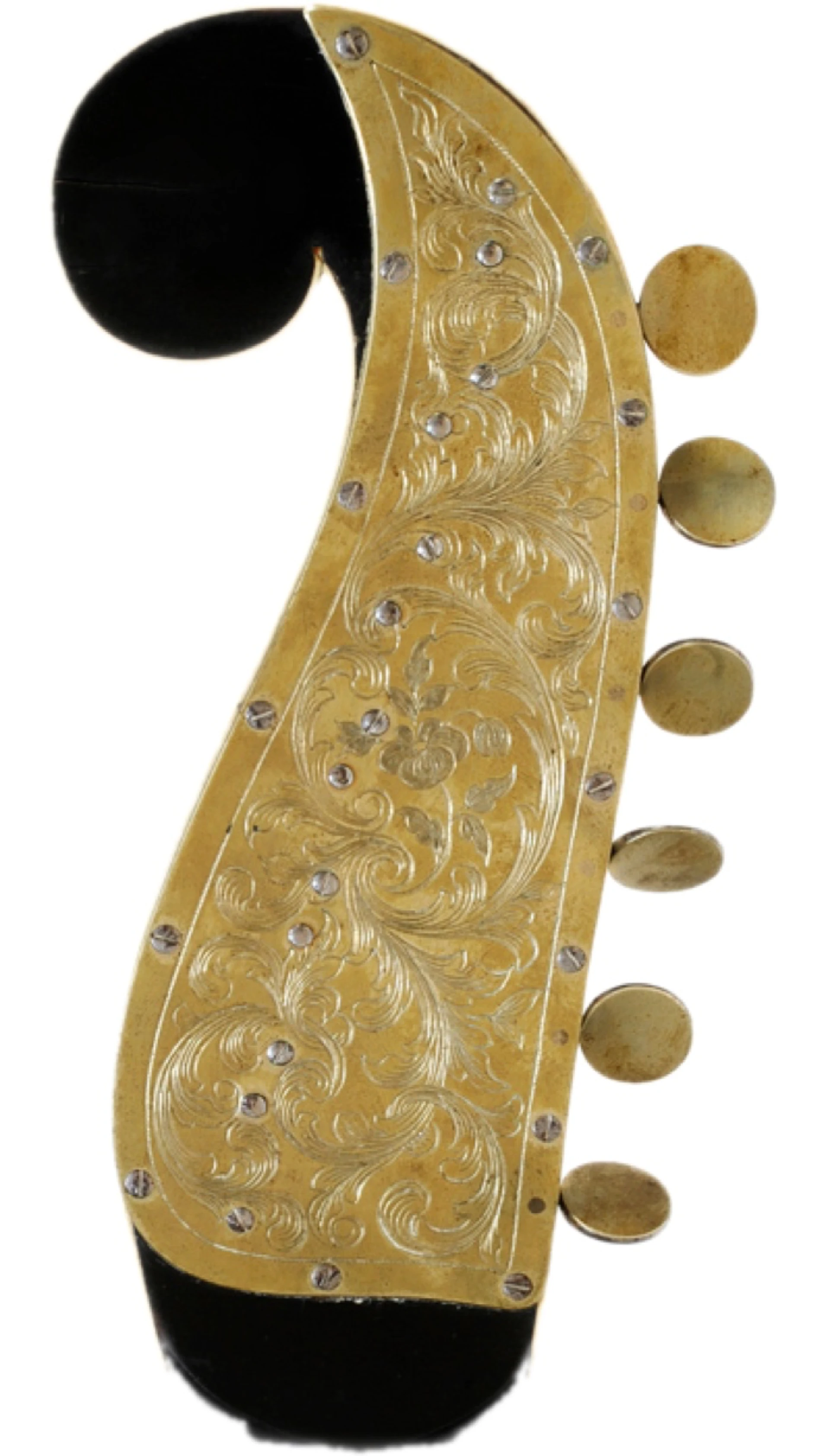
1840s Martin with Stauffer Tuners
Unlike both the independent tuning pegs of old and the now ubiquitous independent tuning machine heads, early metal tuners all shared a common mounting plate. This “on-a-plate” design eventually became associated with slotted headstocks and Nylon String / Classical guitars, though they started out on solid headstocks. Martin continued the Stauffer tradition of the scroll-shaped solid headstock for several years, but began producing slotted headstock instruments that featured plate tuners from the likes of Jerome, Seidel and Waverly.

Kluson Plate Tuners
One hundred years after Stauffer introduced his open-back metal tuners, John Kluson of Chicago started up his shop where he was enclosing worm gear tuners inside metal housings. Though not perfectly sealed, these enclosed tuners addressed the issue of early tuner gear failure due to dirt and debris.
Stauffer invented his tuners just 2 years before Albert Grover of Boston, Massachusetts was born. Grover grew to be a prolific inventor and held many patents, not the least being the development of independent (as in, not on-a-plate) tuning machines. The company Albert began with his son, aptly named A. D. Grover & Son, was purchased by Grossman Brothers Music Company in 1952 and the new company, Grover Musical Instruments, developed the fully enclosed Grover Rotomatic Machine Head which quickly became an industry standard.
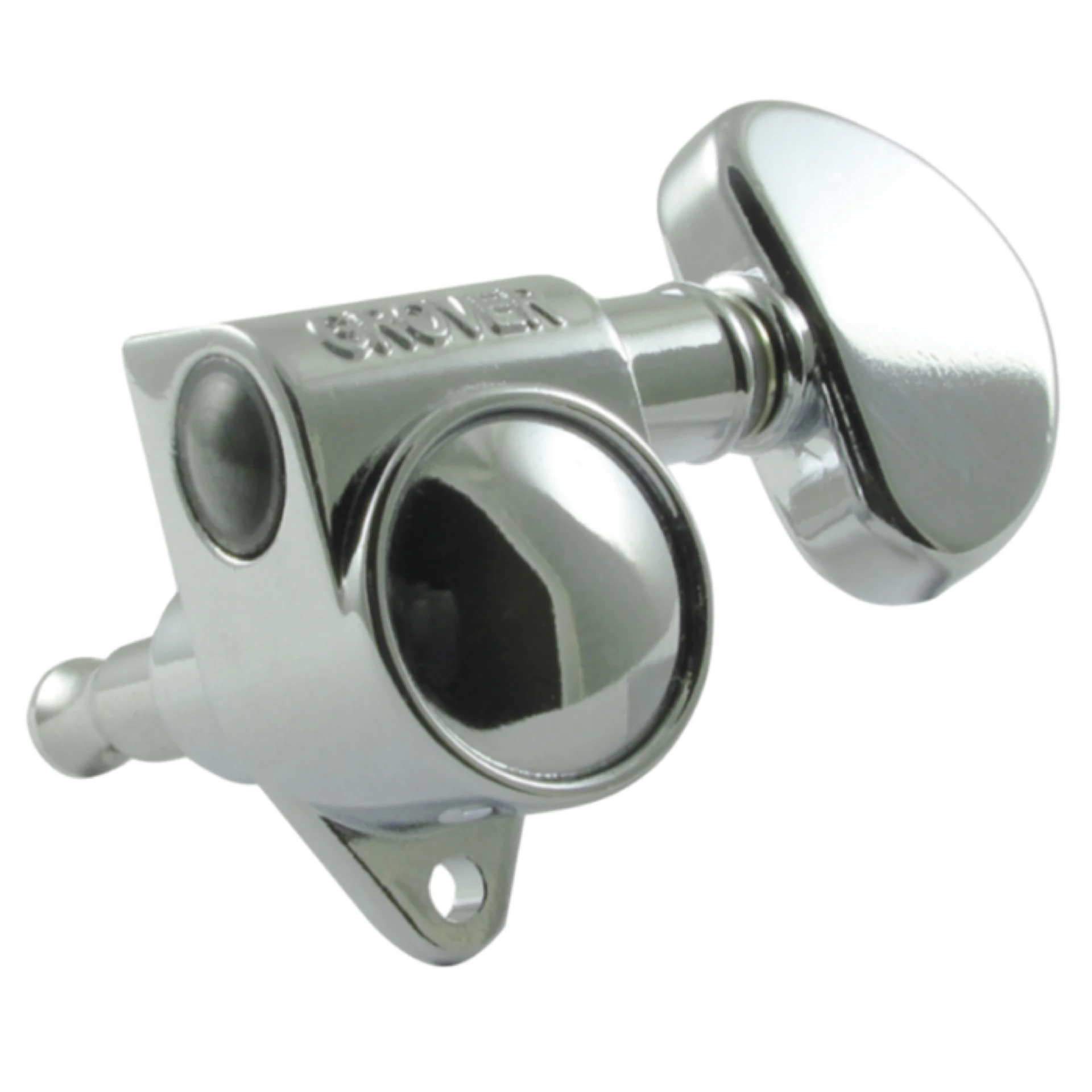
Grover Rotomatic
Cleveland, Ohio native Robert J. (Bob) Spercel was born in 1916 1923 (corrected - many thanks to Bob's daughter, Cheryl). Bob learned tool-making and machining skills from his uncle and, among many other accomplishments, introduced his own solution to the guitar world: the Sperzel Trim-Lok Tuner, which Fender Guitars aptly named the "World's Finest Guitar Tuner" in the May 1979 issue of Guitar Player Magazine.
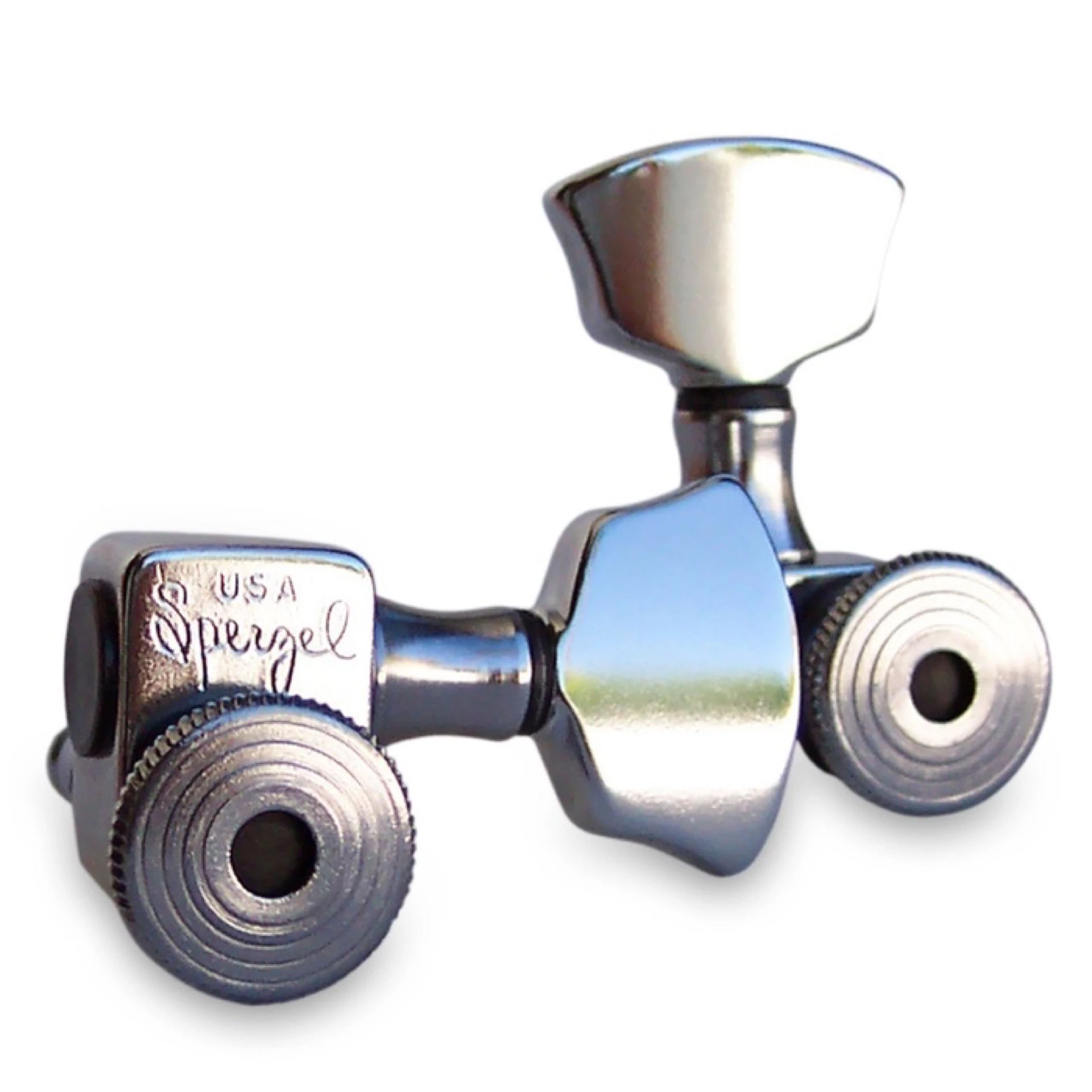
Sperzel Trim-Lok
Manufacturing tuners since 1977, it was in 1983 that Sperzel introduced their revolutionary Trim-Lok design. These innovative tuners made it possible to simply pass the string through the hole in the post, pull it taut, tighten the knob and clip off the excess. Strings now stayed in tune, as the multiple post wraps of yesteryear, which continued to slip as you played, were no longer. String changing times dropped dramatically. And everybody sought to copy the design.
Four men (Stauffer, Kluson, Grover and Spercel) from just three cities (Vienna, Chicago and Cleveland) made significant contributions to the guitar world over a period of approximately 150 years.
I have used many brands of tuners in my own guitars throughout the years, including Kluson, Grover, Schaller, Waverly, Steinberger, Graph Tech (Ratio), and others. But the tuner I have grown to admire most is the innovative and lightweight Sperzel Open-Back Trim-Lok tuner.
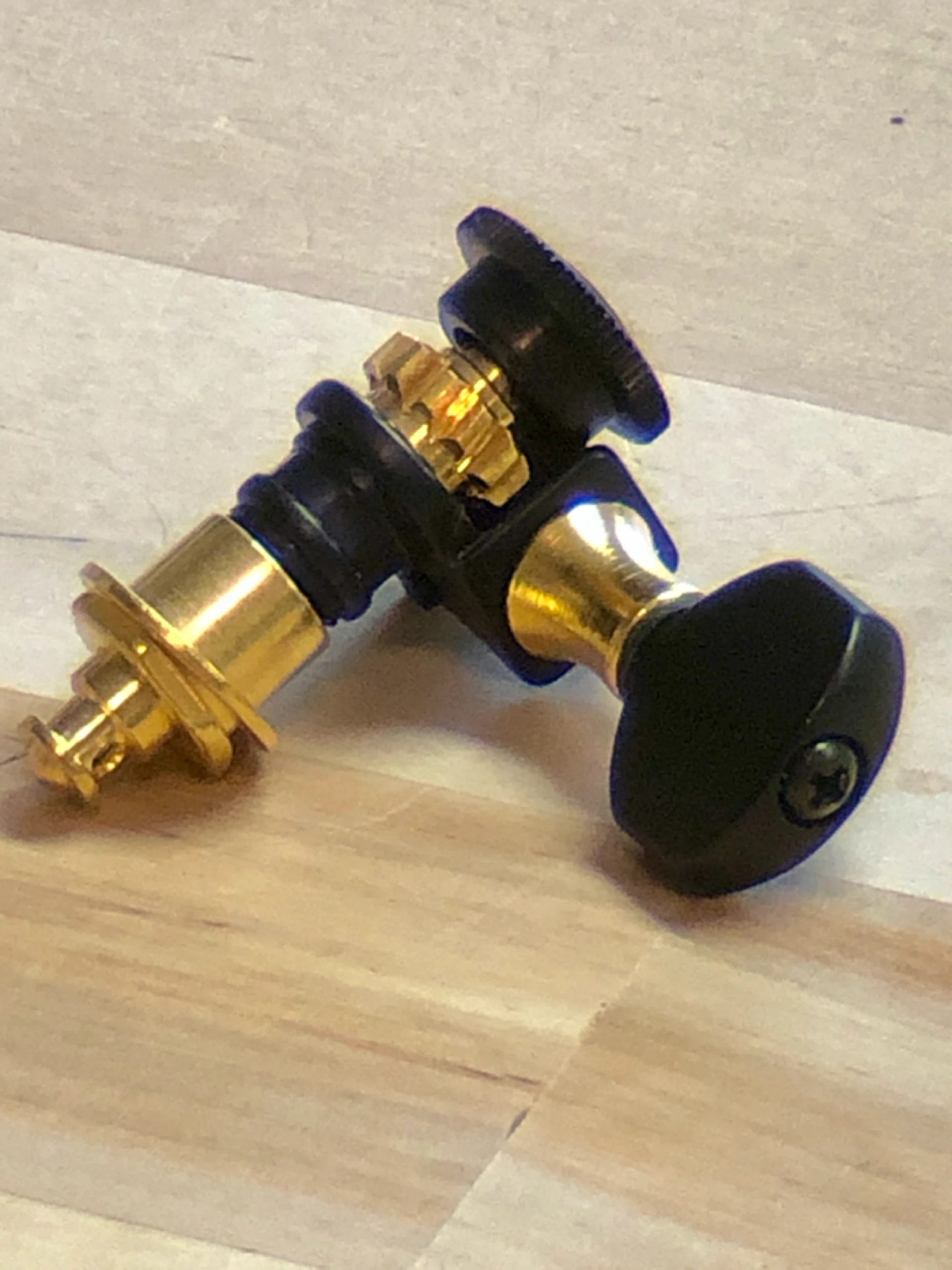
In addition to being machined from aluminum, and thus being significantly lighter in weight than is competitors, the re-engineering of the design of the Sperzel Trim-Lok eliminated the post/shaft wobble common in most all the other tuners on the market. Backlash was reduced to near non-existent, eliminating the need to first under-tune and then creep up to pitch for each adjustment to each and every string. As I mentioned above, the Trim-Lok feature eliminated wrapping the string around the post which, along with poorly-seated ball ends, accounts for the seemingly endless re-tuning of new acoustic guitar strings, as the strings are constantly loosing tension as they either slip up past the bridgeplate or wrap tighter and tighter around the post. With the Trim-Lok one merely pulls the string taut through a small hole in the end of the post, followed by tightening the knob on the back of the headstock. Tuning the string to pitch requires anywhere from 1/4 to 3/4 of a turn around the post. This feature, in addition to providing player confidence, makes long and tedious string changes a thing of the past!
I own several Guild acoustic 12 string guitars, the oldest having been built in 1975. Two (2) of my guitars came with paired steel open back, 6-on-a-plate tuners from the factory. All the rest had extremely heavy Grover sealed gear housings. I do not believe in leaving things that work perfectly fine alone, at least not for any length of time, and am constantly exploring and experimenting. Tuners are no exception, and I have swapped them all out over the years. As you may be aware or can imagine, open back plate tuners are much lighter in weight than sealed machine heads. But they are made of steel and are not lightweight. Older Guild 12 strings are already notorious for their heft (having twin steel compression rods in the neck), and adding extra ounces of metal on the headstock in the form of sealed gear tuners certainly does nothing to help. Here is a 12 string fitted with the lightweight Sperzel Open-Back Trim-Lok tuners. What a difference!

1976 Guild F-512 with Sperzel Open-Back Trim-Lok tuners
You can read more about these tuners on the Sperzel website » Sperzel Guitar Tuning Machines